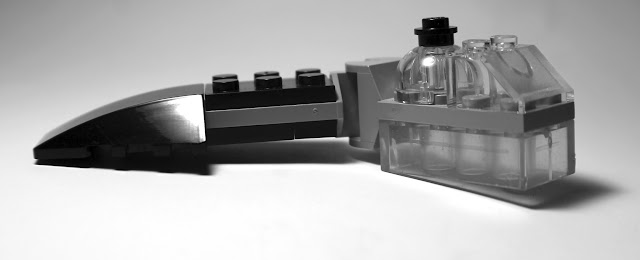While fungi are more related to animals than they are to plants, and the more you know about both the less similar they seem, I still put fungi and plants in the same posts 'cause they're both non-protist eukaryotes. Also, there aren't that many major phyla of either groups and lots of major animal phyla, so it'd just make more sense to have animalia separate from fungi and plantae.
 |
Green Elf Cup Genus and species: Chlorociboria aeruginascens, class: Leotiomycetes, phylum: Ascomycota. Representative for: Ascomycota. |
 |
| Bridal Veil Stinkhorn Genus and species: Phallus indusiatus, order: Phallales (stinkhorns and allies), phylum: Basidiomycota (club fungi). Representative for: Basidiomycota. |
 |
| Lego trick, connection via axle: I connected these two pieces with an axle. This technique comes in handy when you need to connect pieces with opposite facing studs. |
 |
| Mold Phylum: Zygomycota (zygote fungi). Representative for: Zygomycota. |
 |
| Lego trick, clickity-clack: If you hold onto the central part of this chytrid, you can shake it and turn it into a clacker! |
 |
| Common Milkweed Genus and species: Asclepias syriaca, clade: Dicotyledons (dicots), clade: Angiosperms (flowers). Representative for: Angiosperms. |
 |
| Sphagnum Moss Genus: Sphagnum (peat moss), class: Sphagnopsida, phylum: Bryophyta (mosses). Representative for: Bryophyta. |
 |
| Ostrich fern Genus and species: Mateuccia struthiopteris, order: Polypodiales (most ferns), phylum: Polypodiophyta (ferns). Representative for: Polypodiophyta. |
 |
| Lego trick, Dino dig: since ferns were a key organism during the time of dinosaurs, I decided to put a theropod skull on the back of my fern. Also, because my fern would be kinda boring otherwise. |
 |
| (tropical looking) Pine Genus: Pinus, order: Pinales, Clade: Gymnosperms. Representative for: Gynosperms. |






Comments
Post a Comment